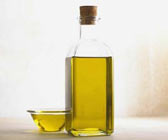  Oil Facts for Kids Oil Facts for Kids
Check out our range of fun oil facts for kids and enjoy learning some interesting information about crude oil, vegetable oil, synthetic oil and others. Read on and find out where oil comes from, what it's used for, examples of common vegetable oils and more. | | |
Oil is a liquid at room temperature. Under normal circumstances, oil does not mix with water. A substance that allows oil and water to mix is called an emulsifier, a good example of this is detergent. Check out our oil and water mixing experiment for more. Vegetable oils are made from plants, examples include sunflower oil, coconut oil, corn oil, peanut oil and palm oil. Some oils are used in cooking, such as olive oil. Crude oil (petroleum) is a thick, black liquid found underground. Crude oil comes from fossilized organic material such as plants and animals. Oil has a wide variety of uses and is often used in cosmetics, medicine, paint, lubricants and as a fuel. Crude oil is converted at oil refineries into a range of different fuels including gasoline (petrol), diesel, kerosene, jet fuel, liquefied petroleum gas (LPG) and more. Fuels such as gasoline, diesel and jet fuel are used to help power engines in machines and vehicles such as cars, trucks and airplanes. Artificially made synthetic oils are used in certain situations where their unique properties are advantageous, for example synthetic oils respond better to extreme temperatures and are used as lubricants in the jet engines of aircraft.
| | | | | | More Chemistry Facts! | | | | | | | | | | | | Oil | | | | |
|
|